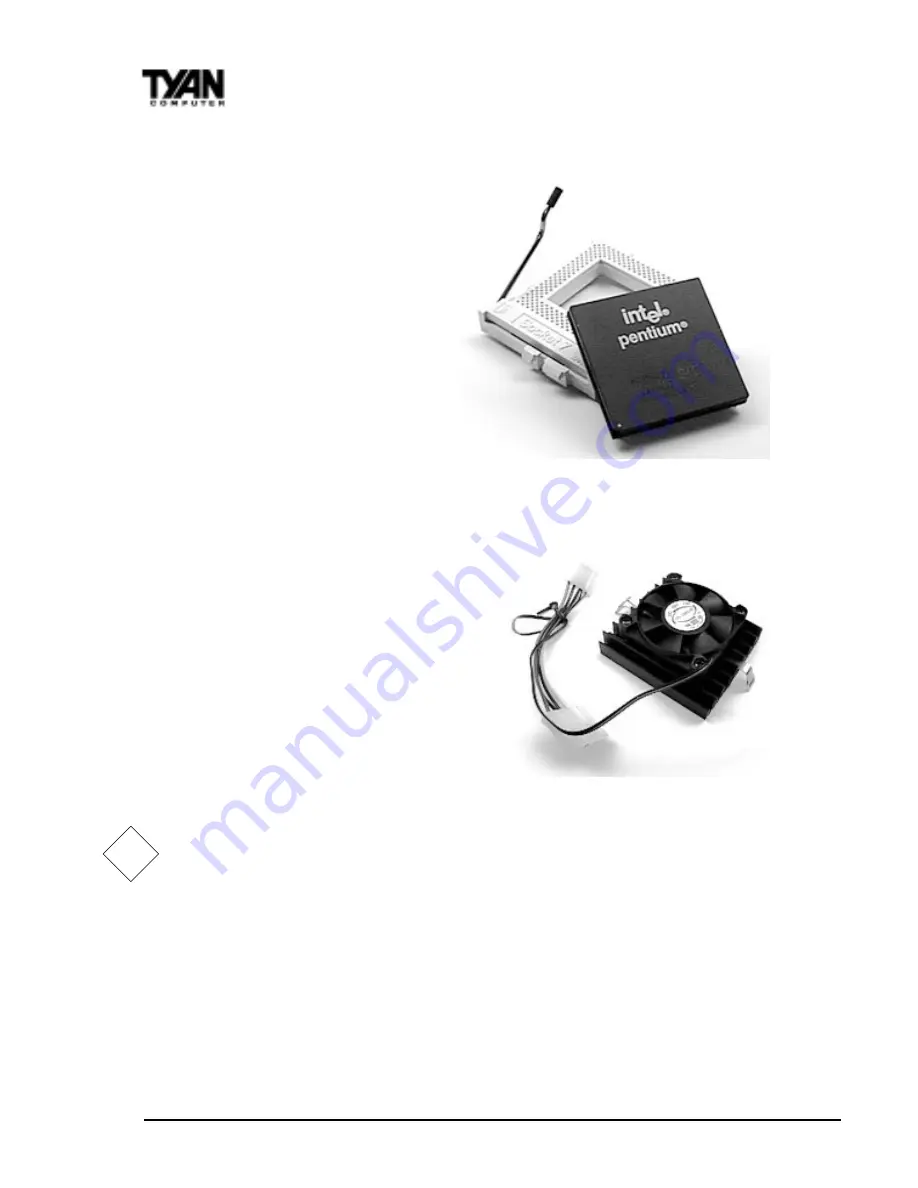
http://www.tyan.com
20
Chapter 2
Board Installation
4. Installing the CPU and Cooling Fan
Socket 7 processors (see Specifications
on page 5) can be used on the Trinity
ATX. Please refer to page 14 for the cor-
rect CPU jumper settings for your CPU.
Remember:
•
The CPU is a sensitive electronic
component and it can easily be
damaged by static electricity. Do
not touch the CPU pins with your
fingers.
•
Before the CPU is installed, the
mainboard must be placed on a flat
surface. You should be able to insert
the CPU with minimal, but firm,
pressure. Do not press down hard on the
CPU.
In Figure 2-6, you can see the CPU and the
ZIF socket. Notice that the arm of the ZIF
socket is up. When this arm is up, the CPU
is unlocked from the socket and allows
you to remove or install a CPU. As the ZIF
socket is keyed to the processor that you
are using, you will only be able to install
the CPU one way, thus eliminating the
chance for error. Pin 1 on the CPU is
denoted by a small dot on one of the corners and Pin 1 on the ZIF socket is
denoted by an angled corner. Never force a CPU into a socket. Forcing a CPU
to seat will bend the pins on the CPU and possibly damage the motherboard.
Check with your vendor or manufacturer for proper voltage selection.
Push down lightly on the CPU, and lower the arm on the ZIF socket to secure
the CPU. A squeaking noise is normal as the arm lowers. After the CPU is
securely seated, install the appropriate cooling device (Figure 2-7). Tyan
strongly recomends a heatsink/fan combination. Consult with your case
manufacturer for other cooling options.
!!!!!
important!
Figure 2-7
Figure 2-6














































